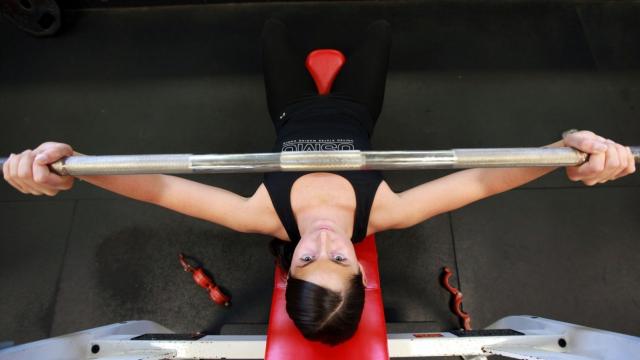We all hit a slump near the beginning of a fitness program. Not at the very start, when we’re excited to get going — more like a few weeks in. It may take six weeks to notice more muscle or better endurance, but how do you get through that time without losing hope?
My own fitness journey has had plenty of ups and downs, since over the years I’ve taken time off due to pregnancies, injuries, work projects and (yeah, I’ll admit it) general laziness. So I’m quite familiar with this slump.
Not long ago, I was collapsed on the floor after a particularly rough CrossFit workout, asking the coach to promise me this will get easier. (It never does, he reminded me; you just lift more and go faster.)
But when you make it through that slump, the days get brighter. You feel like a beast. In the weeks after that conversation, I hit the top of the leaderboard in a Cyclebar sprint. I did 100 burpees. I lifted weights I haven’t been able to lift in years.
All during that slump, I was getting stronger — I just didn’t know it yet. You can get that feeling of progress earlier in the process, if you just create opportunities to improve. Here are some of my favourites:
- Lift something heavier. Experienced lifters struggle to add half a kilo to a kilo to their lifts; beginners can often add more weight every week. This works best for moves like the deadlift, where even 2kg or 5kg is a small percentage of the weight you’re working with. (As always, don’t pile on the weight if you aren’t sure your form is good.)
- Time yourself. Choose a workout as your benchmark that calls for a set number of reps, but where you can do it as fast or as slow as you like. The Nike Training Club app has a few benchmark workouts at different levels, or invent your own. If you’re working toward pull-ups, try a flexed-arm hang. It only takes a tiny bit of progress to be able to beat your time.
- Work out longer. Once you can run a couple of kilometres, your speed might plateau; that’s fine. So instead of running faster, try running a little bit farther instead. Instead of 5km, try 5.5km. Then, a week later, try 6.5km. Then 8km. You get to finish each long run saying, with each step, “This is the farthest I’ve ever run!”
- Practise a skill. A lot of exercises are only partially about strength, and partially skill. Have you ever tried paddling a kayak or climbing a rope? Can you do ballet exercises in time with the music? Pick something that seems a little challenging, feel yourself floundering the very first time you try it, and then give it a few more tries.
- Return to something you haven’t done lately. After focusing on one type of fitness for a while, you may find an old exercise is suddenly a lot easier. You might sprint faster after a few weeks or months of lifting weights, for example.
Any short-term goal can work as a motivator, but beware anything that depends on uncontrollable factors, such as other people or weather conditions. You might be faster at running, but slowed down so much by the weather that it’s hard to tell.
Go easy on yourself, mentally, but keep up your training and soon you’ll see successes.

Comments
One response to “How To Stick With A Fitness Routine When You Haven’t Seen Progress Yet ”
Tracking different metrics is extremely important imo! ie weight on the scales, measurements, weights, 1RM’s ,etc. also form! get infront of a mirror or film an exercise, seriously try it. if it’s bad form it’s a bad rep.